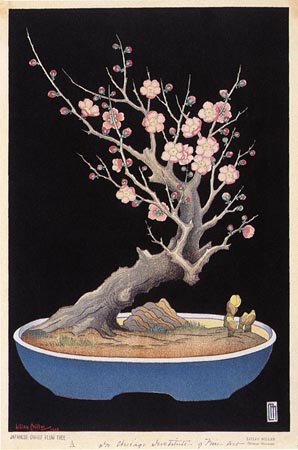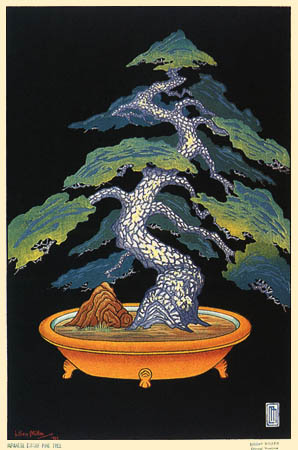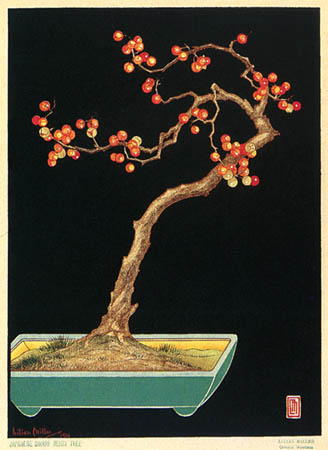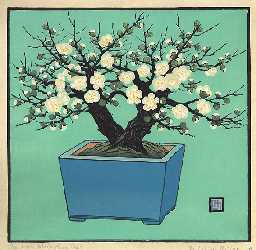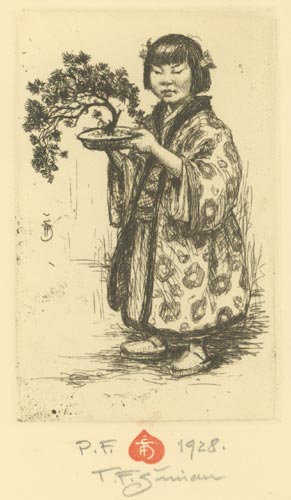
|
"Girl with Bonsai Tree, New Year's Card,"
(1927 for 1928, etching)
|
Tavik Frantisek Simon
(1877-1942) Born in Bohemia, in the then Austrian Empire, Simon was
the youngest of seven children. He showed early a talent for drawing, to the extent that
his elementary school teacher recommended to his parents to send him for art education
in Prague. Simon graduated from the academy in 1903 and received two consecutive
scholarships to travel. The first one was used for a trip to Italy, the second to
Paris and London. In 1905 he had his first one-man show in Prague, in an exhibit
comprised of some 100 works: drawings, pastels, paintings and etchings. The following year
he married the muse of the rest of his life, the beautiful Simon started to work with
renewed energy and added two new techniques, the mezzotint and wood-cut. In the summer
of 1914 while the Simons were again in Prague the archduke Ferdinand was assassinated in
Sarajevo and a war broke out that turned out to become the World War I. The return to France
became impossible. The painter was not drafted in the Austrian army but the livelihood of
an artist became rather difficult as war years dragged on.
In August 1926 Simon
was able to fulfill his long-held dream of travelling around the world and broadening his
repertoire by visiting the more distant parts of the world. He was regularly writing
long letters to his wife describing his experiences and impressions, often illustrated with
pencil sketches. From New York the tour then proceeded to Boston, Buffalo, Pittsburgh,
Cleveland, Detroit, Chicago, Washington, Philadelphia, San Diego, Los Angeles, San Francisco,
after which he continued to Hawaii and the Philippines, Japan, China, Hong Kong, Sri Lanka
(then called Ceylon), India, Egypt, and Greece, ending with Naples and Marseille. The
Orient made a great impression on the artist and he responded by producing numerous etchings,
aquatints and oil paintings, some of which were shown at a comprehensive exhibit in Prague on
the occasion of Simon's 50th birthday. In 1928 Simon was appointed a professor at the
Academy of Arts in Prague to head the school of graphic arts. After 1930 his work as a
professor, curator and writer took too much of his energy, and it is regrettable he had too
little time for his artistic work. Arthur Novak in 1937 made a list of the graphic
works of T.F. Simon and he listed a total of 626 pieces. Then the Academy was closed
in November 1939 after the Nazi occupation of Czechoslovakia. Simon took very hard the
events of World War II and stress declined his health seriously. He died at home
by heart failure following a heart attack some months earlier. His wife Vilma Simonova died in
1959. 2
|
